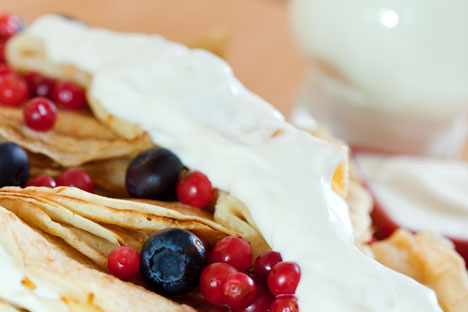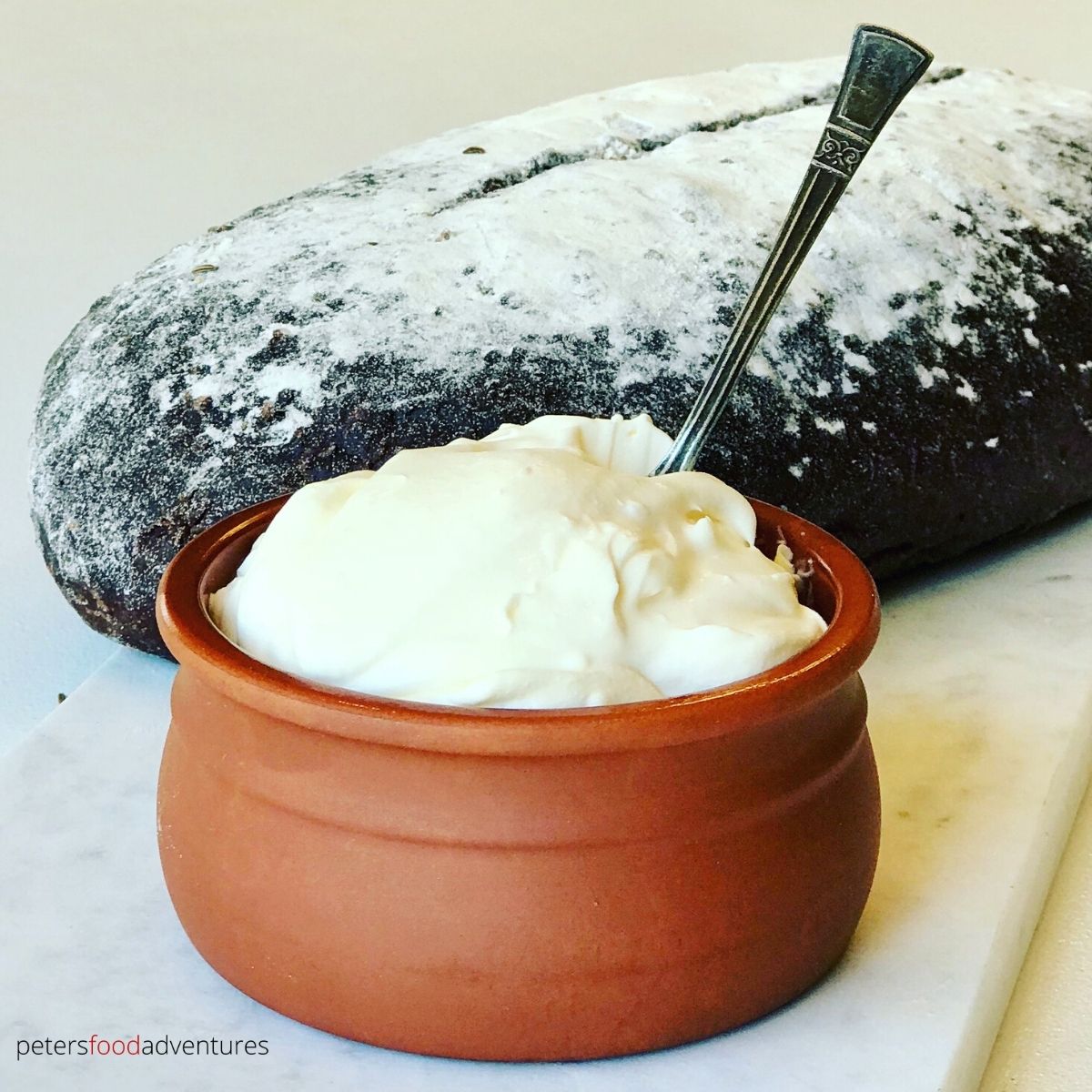Pavlaka
smetana, sour cream
Smetana is the English-language name for the types of sour cream traditionally prevalent in Central, Eastern, and Southeastern Europe, and Central Asia. It is a dairy product produced by souring heavy cream. It is similar to crème fraîche, but nowadays mainly sold with 9% to 42% milkfat content depending on the country. Its cooking properties are different from crème fraîche and the lighter sour creams sold in the US, which contain 12 to 16% butterfat.[clarification needed] It is widely used in cooking and baking. In some of the Slavic languages the sole word smetana refers to (sweet) cream. An Adjective (zakysaná, kyslá, kisla) meaning soured needs to be added to refer to smetana in english sense. Smetana is used in Central, Southeastern, and Eastern European cuisines in appetizers, main courses, soups and desserts. For example, it may be blended with soups, vegetable salads, cole slaw, and meat dishes. It is served with dumplings (pelmeni, pierogi, varenyky), or with pancakes (bliny, palacsinta, naleśniki, oladyi, syrniki). It is also used as a filling in savoury pancakes. Smetana can be blended to a Liptauer-like cheese spread with quark or cottage cheese, onions, paprika and other spices, and eaten with bread. Smetana is often used in cooking, as it is high enough in fat not to curdle at higher temperatures. It is used in the preparation of meat stews, such as beef Stroganoff, vegetable stews, casseroles, or other dishes that require a long cooking time in the oven. Smetana does not melt in the oven. Hungarian cooks use it as an ingredient in sauces such as paprikas, and in recipes such as palacsinta (crepes) filled with ham or minced meat (hortobágyi palacsinta). A similar use is common in Eastern European Jewish cuisines, except that smetana is not used with meat dishes due to the Jewish dietary prohibition of mixing dairy products with meat.
Source: Wikipedia
Recipes




